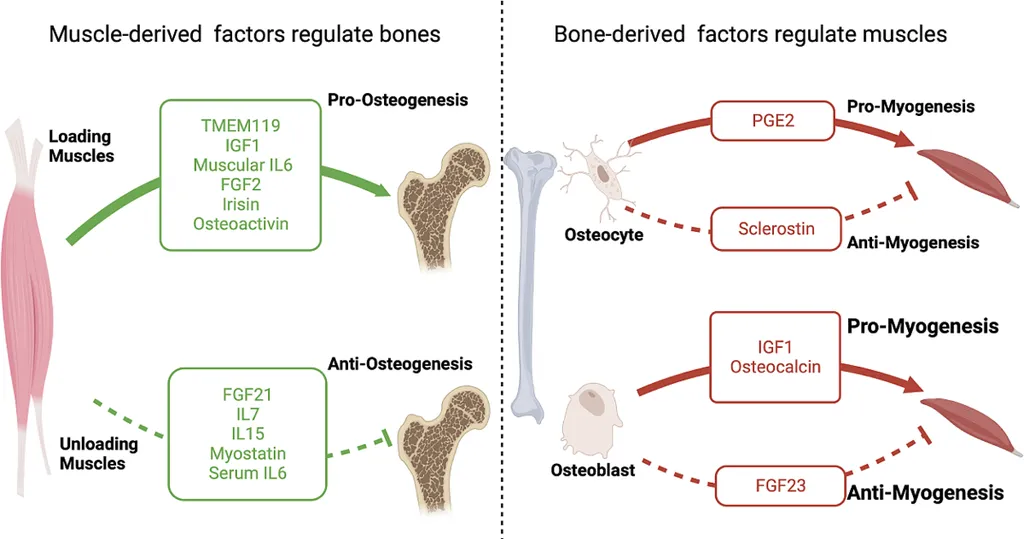In the intricate dance of the human body, bone and muscle have long been seen as partners in movement, with muscles pulling on bones to create motion. However, a new study published in *Frontiers in Cell and Developmental Biology* reveals that this relationship is far more complex and communicative than previously thought. Led by Guobin Li from the College of Life Sciences at Inner Mongolia Agricultural University, the research delves into the emerging concept of “bone-muscle crosstalk,” where bone and muscle interact through the exchange of signaling molecules, challenging our understanding of musculoskeletal health.
The study highlights that bone and muscle are not just mechanical partners but also endocrine organs, capable of producing and releasing signaling molecules known as osteokines and extracellular vesicles (EVs) that influence each other’s functions. While the influence of muscle on bone has been extensively studied, the reverse—how bone regulates muscle—has remained largely unexplored until now.
“Emerging studies indicate that the transmission of signaling molecules from bone to muscle is partially mediated by hemichannels and gap junctions formed by connexin 43 (Cx43) in osteoblasts and osteocytes,” explains Li. This discovery opens up new avenues for understanding how bone and muscle communicate and regulate each other, potentially leading to innovative therapeutic targets for conditions like osteoporosis and sarcopenia.
The implications of this research extend beyond human health into the agricultural sector. Understanding the intricate communication between bone and muscle could lead to advancements in animal husbandry, particularly in the breeding and care of livestock. By identifying the key signaling molecules involved in bone-muscle crosstalk, researchers may develop strategies to enhance muscle growth and bone strength in animals, leading to healthier and more productive livestock.
Moreover, the study’s focus on Cx43 and its role in the release of secretory factors through bone-muscle crosstalk could pave the way for new biotechnological applications. For instance, targeted interventions could be developed to improve the efficiency of meat production or to enhance the resilience of animals to stress and disease.
As Li and his team continue to unravel the complexities of bone-muscle crosstalk, the potential for groundbreaking discoveries in both human and animal health becomes increasingly apparent. This research not only challenges our current understanding of musculoskeletal interactions but also offers a glimpse into a future where precision agriculture and advanced biotechnology could revolutionize the way we care for and utilize livestock.
In the words of Li, “The continued research into bone–muscle crosstalk is expected to identify new therapeutic targets for the twin diseases of osteoporosis and sarcopenia.” This sentiment underscores the transformative potential of this research, not just for human health but also for the agricultural sector, where the pursuit of efficiency and sustainability is paramount. As we stand on the brink of these discoveries, the future of bone-muscle research looks promising, with the potential to reshape our approach to health and agriculture alike.

